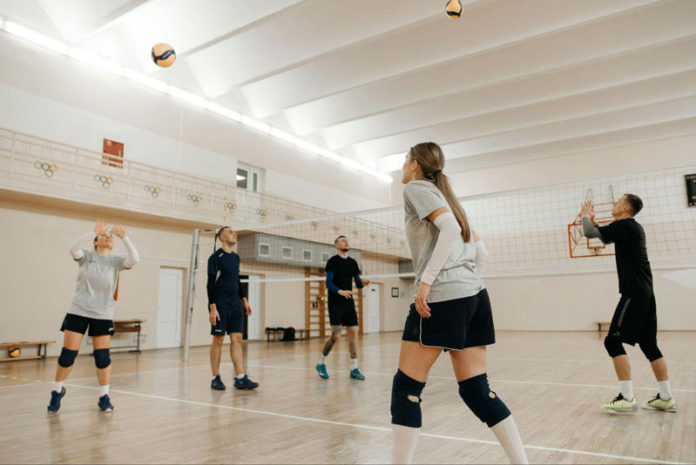Published in cooperation between SportsCasting.com and the Gilroy Dispatch
Inside a bustling Gilroy gymnasium on a recent Thursday evening, the rhythmic thud of volleyballs hitting hardwood told a story that’s playing out across California. Here, where volleyball was once an afterthought, the local high school team has just clinched second place in the competitive Santa Teresa East Division with a 7-3 record, marking a dramatic shift in the community’s sports landscape.
This transformation isn’t happening in isolation. Across the nation, volleyball is experiencing an unprecedented surge in popularity. The National Federation of State High School Associations reports volleyball participation has skyrocketed to an all-time high of 470,488 players in 2022-23.
In Gilroy, this surge is evident as coach Sonya Beck’s program continues to defy expectations:
“Every season, we’re seeing new faces, more talent, and growing enthusiasm,” Beck says, watching her team execute complex plays that would have seemed impossible just a few seasons ago. This local success mirrors a broader trend: USA Volleyball reports a record-breaking 333,208 women registered with clubs as of July, representing a stunning 40 percent increase since 2013-14.
The sport’s explosive growth in California has created ripple effects throughout the athletic community, where emerging trends including betting sites in California drive increased engagement with sports at all levels. Online betting sites and local sporting goods stores are experiencing a surge in demand for volleyball equipment and betting activity, while community centers are working to accommodate the increasing number of teams seeking court time.
This evolution is backed by hard numbers. USA Volleyball’s registered clubs have nearly doubled, jumping from 1,750 in 2004-05 to 3,880 in 2023-24. For communities like Gilroy, this means more opportunities, better competition and stronger programs.
Four-time Olympian Jordan Larson, watching this transformation unfold, sees it as more than just a trend:
“There is a way in volleyball you can still show that assertiveness, that leadership—but with a layer of elegance that comes along with it,” she explains, highlighting the unique appeal drawing athletes to the sport.
The impact is reshaping California’s sporting infrastructure. Sacramento has already broken ground on new multi-use court facilities, while other cities rush to follow suit. League One Volleyball (LOVB) is capitalizing on this momentum, building a network of 54 clubs encompassing more than 14,000 players.
Yet perhaps the most telling sign of volleyball’s influence comes from unexpected places. Local businesses report increased foot traffic during tournaments, while real estate agents now highlight proximity to volleyball facilities as a selling point for family homes. Community centers are expanding their hours to accommodate evening practices, creating new jobs for coaches and support staff.
The success of Gilroy’s volleyball program reflects a broader transformation happening across California sports. The packed bleachers at their recent matches—once a rare sight—have become the norm, while youth program waitlists grow longer each season. This shift signals more than just volleyball’s rising popularity; it represents a fundamental change in how communities approach sports, breaking away from traditional hierarchies that once favored established games like football and basketball.
The impact extends beyond school gyms. Tournament weekends now bring waves of visitors to local restaurants and hotels, creating mini economic booms that city officials have started to notice. Small businesses near practice facilities report increased weekday traffic, while sporting goods stores have expanded their volleyball sections to meet growing demand. It’s a grassroots revolution that’s reshaping not just athletics, but community dynamics across the state.
The transformation has caught the attention of city planners and developers across the state. Recent proposals for community development projects increasingly include dedicated volleyball spaces, reflecting a shift in priorities from traditional field sports to more diverse athletic offerings. This architectural evolution speaks to a broader change in how communities view and support emerging sports.
Looking ahead, industry experts predict this trend will continue to reshape community athletics. With professional leagues expanding and media coverage increasing, the connection between national sports trends and local development grows stronger each season, suggesting a future where diverse athletic opportunities become the norm rather than the exception.














